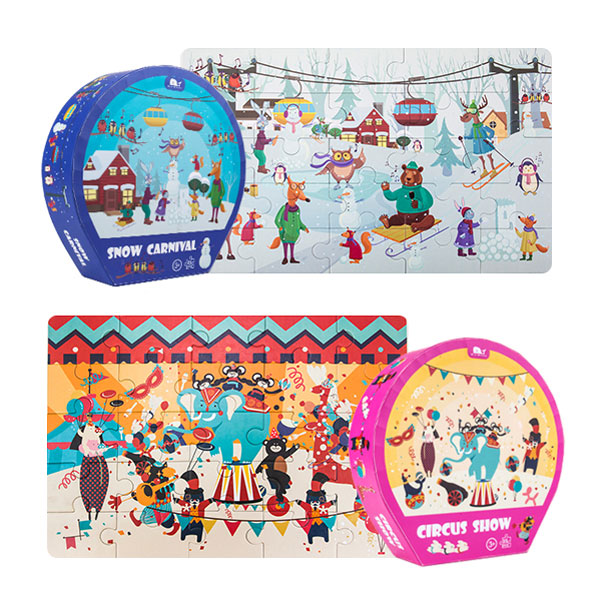Creating a jigsaw puzzle that promotes shared play and learning for both adults and children is a creative idea. To align with your concept of becoming "smarter" as you play, you could design a "Progressive Learning Puzzle." Here's how it could work:
Progressive Learning Concept: The puzzle is designed to represent a gradual increase in complexity and knowledge. As you complete different stages or levels of the puzzle, you unlock new layers of information or challenges.
Modular Design: The puzzle could consist of multiple layers or sections that can be stacked or assembled in different orders. Each layer could have its own theme, topic, or level of difficulty.
Learning Content: Each layer of the puzzle could contain educational content related to different subjects such as science, history, geography, art, or even general knowledge. Information about famous landmarks, historical events, animals, or artistic styles could be incorporated.
Interactive Elements: Along with the puzzle pieces, you could include interactive elements such as QR codes or augmented reality markers. When scanned with a device, these elements could provide additional information, videos, or challenges related to the layer being worked on.
Collaborative Play: Adults and children can work together to assemble the puzzle and explore the learning content of each layer. As they progress, they gain a deeper understanding of various subjects and concepts.
Skill Development: The puzzle can encourage critical thinking, problem-solving, and teamwork as players navigate through different layers of information and challenges.
Customization: Depending on the age of the child, you can customize the difficulty of the layers. Younger children can engage with simpler layers, while older children and adults can tackle more complex ones.
Narrative or Storytelling: Consider incorporating a narrative that ties the layers together, creating a sense of adventure and discovery as players progress through the puzzle.
Designing such a puzzle might require collaboration with educators, designers, and possibly digital developers to create the interactive elements. The aim is to offer an engaging and enriching experience that fosters learning, bonding, and shared exploration. Keep in mind that the primary goal is to provide a positive and educational experience rather than a strict measure of becoming "smarter."
